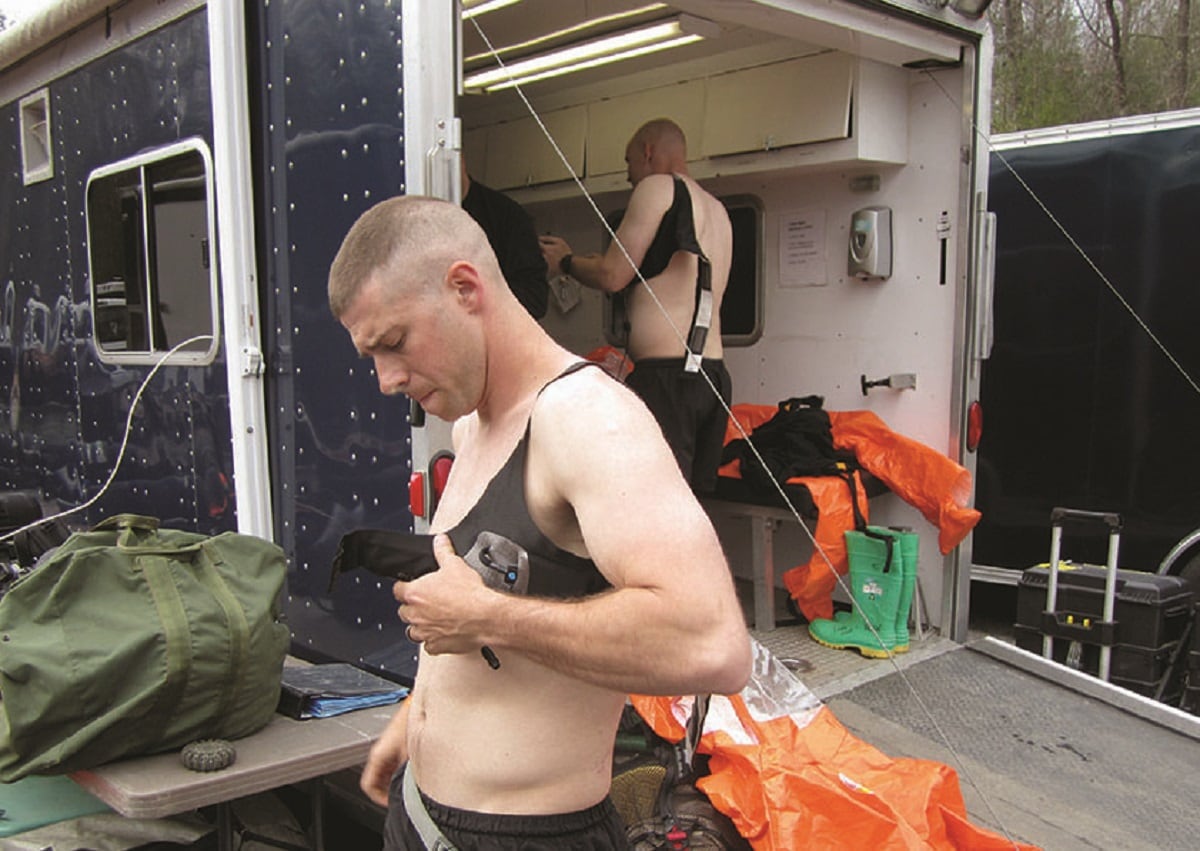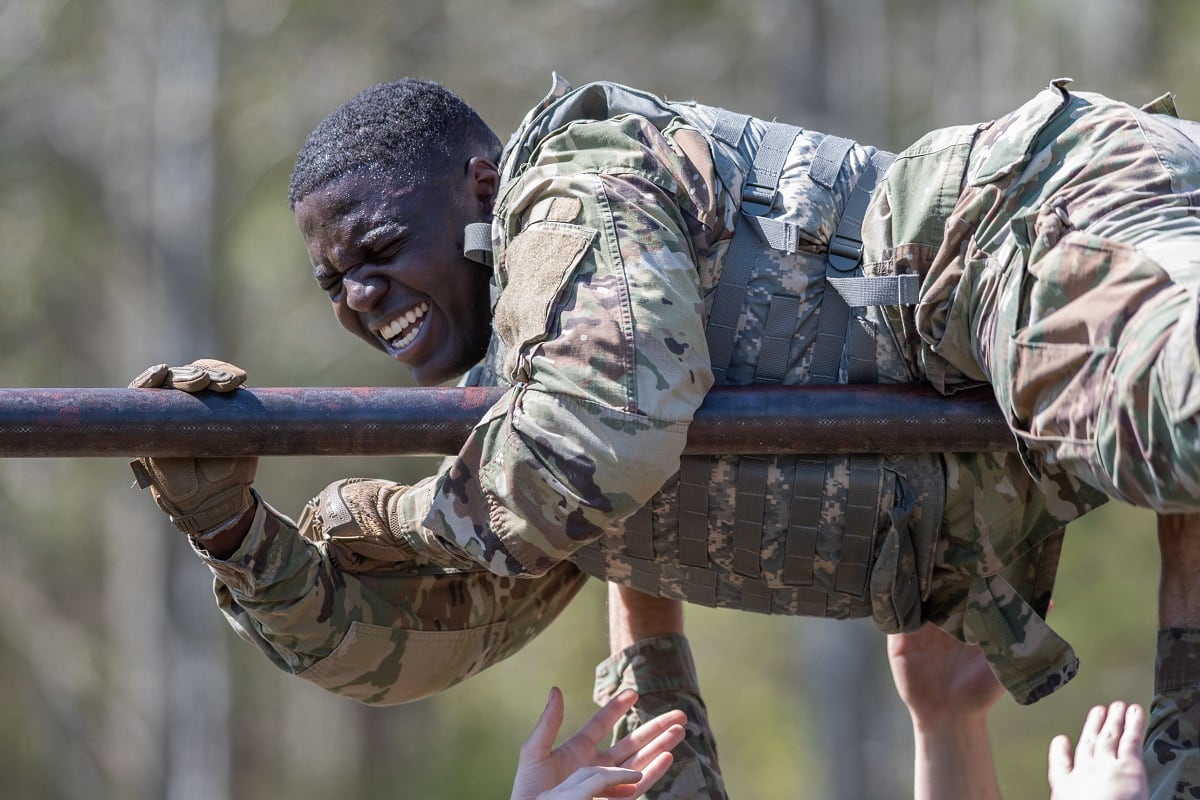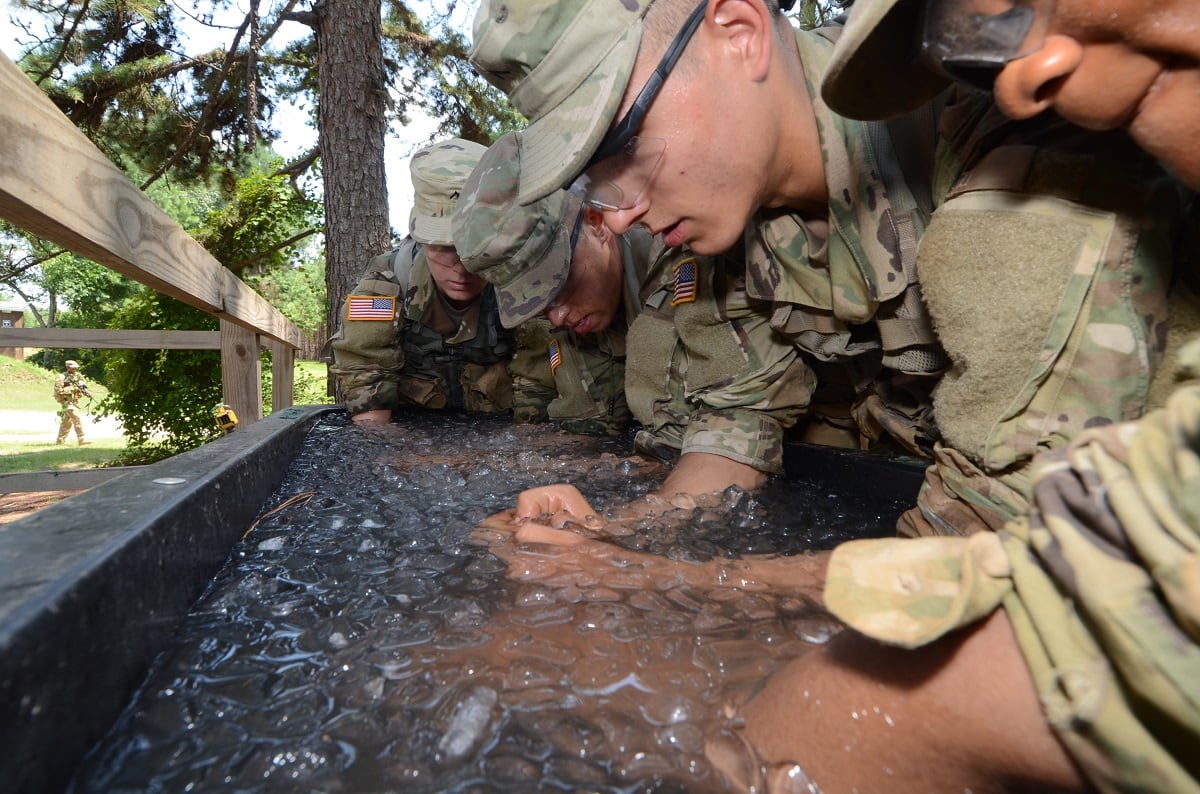Few things will mess up a day of training like a heat casualty.
They’re dangerous and require immediate medical care, for one, and they’re also costly in time. It’s not uncommon to see soldiers in basic training at Fort Benning, Georgia, with their sleeves and pants rolled up to ventilate, or Fort Jackson, South Carolina, trainees submerging their forearms in ice baths to keep their body temperatures stable.
This summer, the Army Research Institute of Environmental Medicine studied soldiers completing the first and second phases of the Ranger Assessment and Selection Program at Fort Benning. It was part of a larger study that has used physiological status monitors on 2,000 other soldiers in basic training and jump school on the post, according to an Aug. 27 release from USARIEM.
“We are collecting data on soldiers during hot weather training to determine if those who develop heat illness possess a unique physiological profile compared to their peers who perform the same training activities but do not develop heat illness,” Dr. Mark Buller, a research physiologist for USARIEM, said in the release.

The sensors track heart rates along with core body and skin temperatures as soldiers train outside, comparing the numbers of those who don’t come down with heat illnesses versus those who do.
“We would like to use this data in order to evaluate the capabilities of the current [real-time physiological status monitors], as well as develop an alerting system similar to a radiation badge that can track impending heat casualties without changing training standards,” Buller said.
The numbers of heat casualties have gone steadily up over the past few years, according to the release, and so the Army wants to do a better job of predicting when and where they’re going to happen.
“The Army has gotten better at treating heat illness when it occurs, but we want to work at preventing it in the first place,” Dr. Beth Beidleman, also a USARIEM physiologist, said in the release. “We are studying to see if using real-time modeling can do that.”
This year alone, there have been 480 reported cases of heat illness, according to Army data, with 272 in June. Out of those 480 cases, 219 of them were at Fort Benning, where high temperatures and Georgia humidity create a particularly dangerous environment.
RELATED

"At Fort Benning, we are truly on the cutting edge of clinical management of heat-related illnesses,” Maj. Meghan Galer, the assistant chief of emergency medicine at Benning’s Martin Army Community Hospital, said in the release. “Developing the Heat Center at Fort Benning will be an invaluable means by which to improve readiness through sustainable prevention and mitigation strategies, as well as provide life-saving medical care while advancing the state of medicine.”
Thirty-one Ranger Regiment hopefuls wore the sensors in a chest harness during July, measuring their statistics as they completed a five-mile run, 12-mile ruck march and other field exercises. Another 162 officer candidate school trainees wore the system during land navigation ― while not necessarily as physically intense, Buller explained, that event put soldiers out in remote areas, where it would take much longer to receive medical attention if they collapsed.
“We have actually been able to capture data on individuals who have suffered heat stroke,” Beidelman said. "If our analysis shows there are physiological differences between soldiers who developed heat illness versus the ones who did not, this information could help us find heat illness predictors and establish thresholds for what is considered dangerous during training.”
Meghann Myers is the Pentagon bureau chief at Military Times. She covers operations, policy, personnel, leadership and other issues affecting service members.




